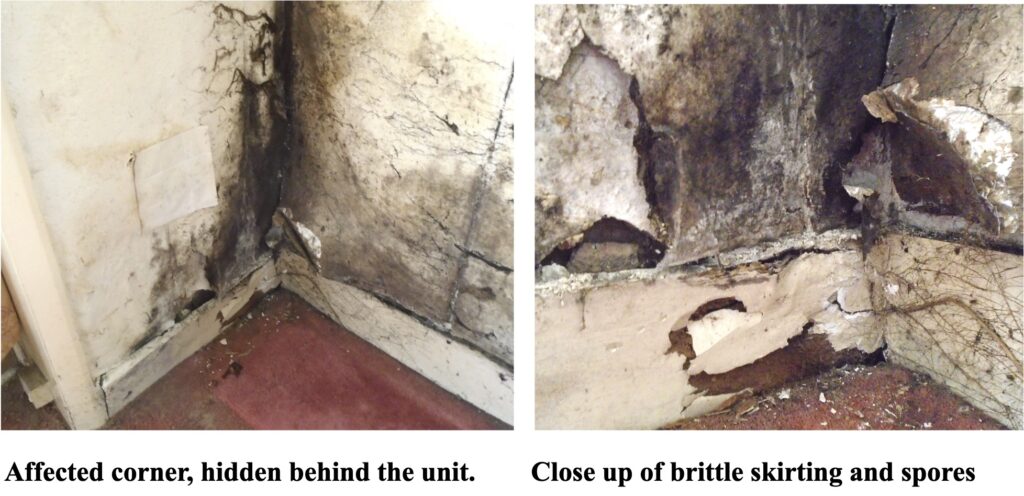The images below are from a survey carried out at a terraced house. The owner had ignored early telltale signs of a problem developing in the corner of his ground floor living room.
Upon entering the room, there was a clear damp smell. Once furniture was moved from the affected corner, the signs were obvious. The wall surface had turned black, wallpaper was peeling away, and the skirting boards were brittle with visible fungal spores. We carried out further investigation beneath the floor by lifting the boards. At that point, we found that several joists were decayed, the surrounding timber had become soft and crumbly, and spores were clearly visible. The issue was identified as dry rot.

Dry rot is a serious form of timber decay caused by a fungus called Serpula lacrymans, which thrives in damp, stagnant environments. It breaks down the structural strength of wood, leaving it brittle and cracked. In more advanced cases, it can spread through masonry and behind finishes, remaining hidden until significant damage has taken place. Early signs often include a musty smell, orange or rust-coloured spore dust, and signs of timber shrinkage or distortion.
In this case, the source of the problem was traced to a slow, undetected mains water leak in the neighbouring property. The affected house also lacked adequate subfloor ventilation, which allowed the damp conditions to persist and created the ideal environment for dry rot to develop.
To address the issue, we recommended the complete removal of all affected floorboards and joists, extending beyond the visibly damaged areas to ensure full containment. We also advised that plaster be removed from the affected walls, including a safe margin on either side. Once the area was exposed, amongst works carried out the surrounding masonry was treated with a suitable fungicidal solution. Ventilation was also a key part of the preventative solution, so new air bricks were installed at both the front and rear of the property to improve airflow beneath the floor and help prevent future recurrence.
If you smell damp or see signs of damage in your property, contact Haus Surveyors to investigate the issue and provide a clear report with practical next steps.



